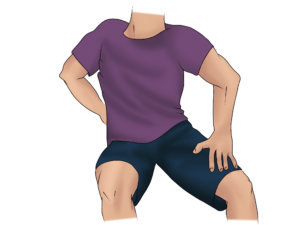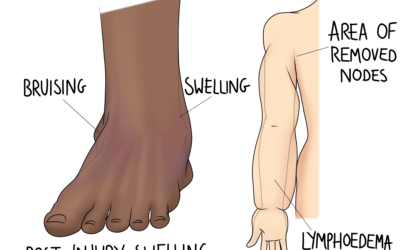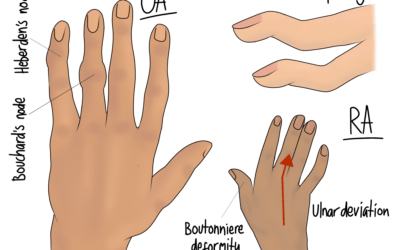Osteopaths are here to help with all sorts of conditions, but we can also help with those little aches and pains too. You might wonder “why would I bother?”. For those little twinges that last for a day and never return, you might not be missing out by not making an appointment. But if you’re contending with something recurrent, or a low level grumble that’s constantly there, it’s probably worth a look.
Early Stage Conditions
Most things are easier to manage when we nip them in the bud, and the same is true for muscle or joint problems. Arthritic hips that end up with a joint replacement often start with a very subtle ache. Identifying and acting on these issues when they’re still very minimal gives you the best chance at a smooth ride in managing them. Osteopaths work in a holistic way, looking at other factors that might have had some involvement with the presenting symptoms. Working on all of these areas takes the strain off the affected joints for a more well-rounded approach.
Preventing Aches and Pains Elsewhere
The body is very good at finding ways to protect itself. But sometimes it’s too good, and actually causes new symptoms elsewhere. Twingey little issues like mild ankle sprains can be a good example of this. If you went over on your ankle once, and it was never severe enough to require much more than a bit of ice and rest, it might not have felt significant. But if it has a tendency to twinge, and maybe roll again whenever you’re on undulating ground, your body might start to react for you. Maybe your centre of gravity will shift towards the other side to reduce weight bearing on that ankle. Or maybe local muscles will become tense as they brace the vulnerable joint. Either of these subconscious strategies asks something different of muscles and joints in the rest of the body.
Minimising Sensitisation
The science of pain is complicated, as discussed in posts about chronic pain and more complex pain conditions. The way we experience pain is affected by:
- Our pain beliefs
- The injury itself
- Previous associations with the pain
- Our understanding of the impact the pain might have on us
- And more.
Predicting how pain will develop for someone with a diagnosis of Sciatica, for example, is very difficult. The combined effect of the factors listed above make prognosis different for everyone. But the way you manage your symptoms is another factor that can have a huge impact on the symptoms themselves. We might advice a patient with sciatica to carry out their exercises within a comfortable range. You might be inclined to push the limit, but for some people this will exacerbate symptoms. This can be due to the brain’s interpretation of what the pain means.
Pain is a defence mechanism, and should be an indicator of danger (although it’s not always that simple). So if you repeatedly carry out a movement that causes some low level pain, the brain could interpret the movement as threatening. This in turn can cause the pain to be magnified as the brain tries to make it clear to you that the movement is dangerous. All the while, these twinges may not cause even the tiniest hint of damage to the tissues themselves.
Examples of Aches and Pains to Address
With all of the above in mind, what does an ache or pain look like when it needs help?
Recurrent Headaches
We all get the occasional headache associated with a neck issue, like when you’ve been sitting awkwardly or you have a bad cold. In these cases, you might have found that a warm compress or some gentle self-massage helps to relieve both the neck and headache. For isolated instances like these, first aid at home is likely to be a solution. But if your headaches keep coming back, or last longer than you’d expect, book in with one of our osteopaths. Headaches can be difficult to fully diagnose; the cause is often unclear. But we have some tests we can run in conjunction with the information gathered in your appointment to identify cervicogenic headaches. These are simply headaches that originate in the neck. The cause could be muscular, an irritated nerve, or referred pain from a joint or disc. Treatment will likely be focused on treating the underlying neck issue, and may be combined with cranial osteopathic techniques.
We know that some people really enjoy having their neck manipulated or “clicked”, while others can’t stand it. We have a range of techniques available to us, so there’s something suitable for every patient. Don’t be concerned that by booking your appointment you’re signing up to techniques you’d rather avoid. Everything we do is with ongoing consent.
Early Arthritic Pain
People often fall into the trap of thinking that arthritis is the beginning of the end, and that nothing can be done. But early intervention can be very effective, both for osteoarthritis and inflammatory types.
Early osteoarthritis may be completely asymptomatic, or it might be a friend or relative who notices you moving differently before you do. The body is good at protecting itself and avoiding pain. Unfortunately, this can lead to compensatory patterns that cause further issues. For a joint to remain healthy, it needs to move through its whole range frequently. Using the hip as an example, you can see how the end ranges could be missed in daily life for someone who just walks and sits without moving into squats and lunges as part of their daily life. You might do these movements without realising, such as squatting down to reach something in a low cupboard rather than bending from the hip, or lunging over furniture to reach something that’s dropped down the side. These little movements are important, and the best way to ensure you do them is to build them into a dedicated exercise routine. Your osteopath can help you devise one.
If these movements are missed, the cartilage in the joint does not receive the nutrients it needs. This living tissue has a poor blood supply, and depends on the fluid in the joint to bring in nutrients and take away waste products. Compression and release of the cartilage itself pushes out the waste and encourages the nutrients in. But if some parts of a joint’s cartilage are never or always compressed, they won’t have that fluid exchange. The tissue begins to degrade, leading to early arthritis.
Addressing the development at this early stage can restore joint health, and may be able to reverse some damage if the process has not progressed too far. The long term strategy is exercise to help the joints on a daily basis, but we can give you an initial mobility boost with treatment at the start of your journey and with top-ups as required. In the treatment room, we will look for tension in muscles that might be further limiting movement, and remind the body of the mobility it is capable of by moving the joints for you. Further afield, we can see if there are any other compensatory patterns, or if there are any issues elsewhere that might be contributing to the arthritis.
Recurrent Lower Back Pain
Lower back pain is a common issue, and it’s the leading cause of UK sick days. Common doesn’t mean normal, and if your back pain limits your ability to do what you want or need to, it’s time for some intervention. Back pain is multifactorial, so in any case, there will be a number of strategies to apply together to make a difference. Patients often blame their posture, but this really boils down to areas of weakness and areas of stiffness. Addressing these allows the back to move better again, reducing areas of overstrain. Do you find that work impacts your pain? Maybe you need an ergonomic assessment from your employer, or some advice from your osteopath about improving your desk set-up when you work from home.
Besides from “typical” lower back pain, if yours keeps returning for no apparent reason, it might be something a bit more complicated. Some rheumatological conditions present like innocuous back pain, but really need specialist intervention. We see people with back pain all day every day, so with our detailed case history and examination, we’re in a good position to pick up on the signs that something isn’t quite right.
Reasons to see an Osteopath for your Aches and Pains
- To identify the early stages of a condition
- To prevent and manage the body’s compensatory patterns to discomfort
- To provide advice to avoid exacerbating your symptoms
If any of the information above resonates with you, you can book an appointment below to start managing your aches and pains. No issue is too small, some patients like to come in regularly but infrequently to identify and act on problems before they’re noticeable. If you’ve experienced an acute problem before, you’ll understand the benefit in making sure it doesn’t
Click here to make an appointment in Leeds for your aches and pains




0 Comments